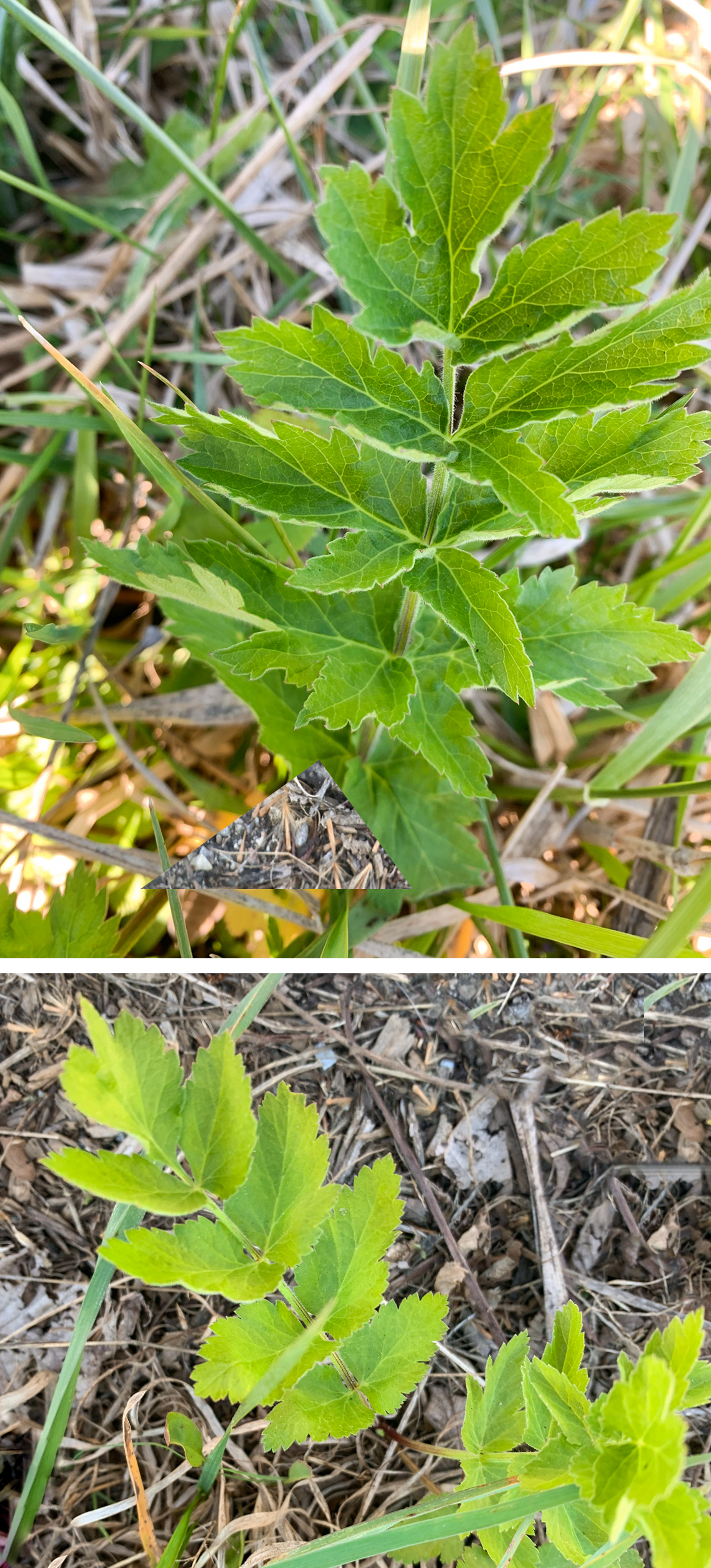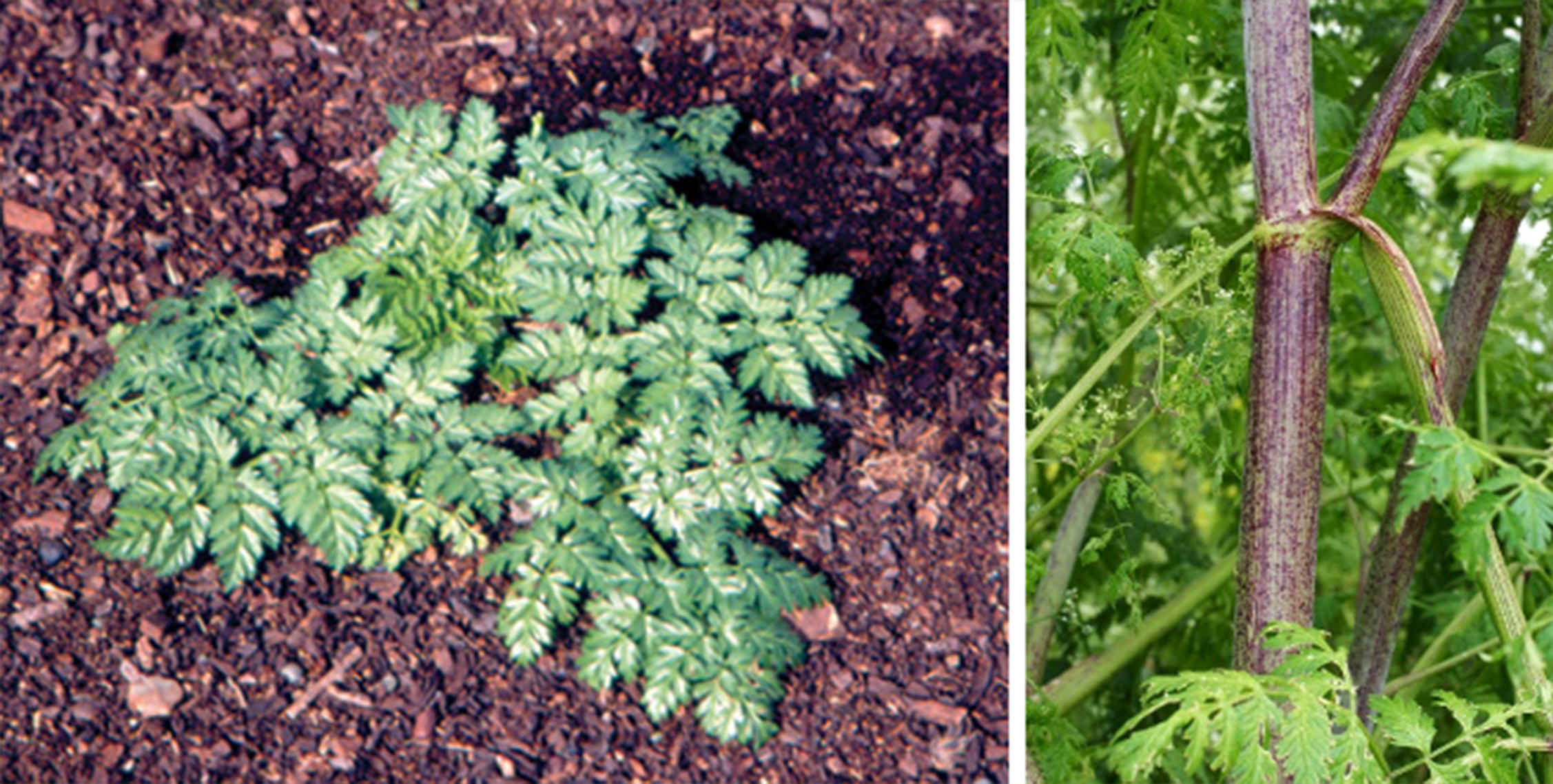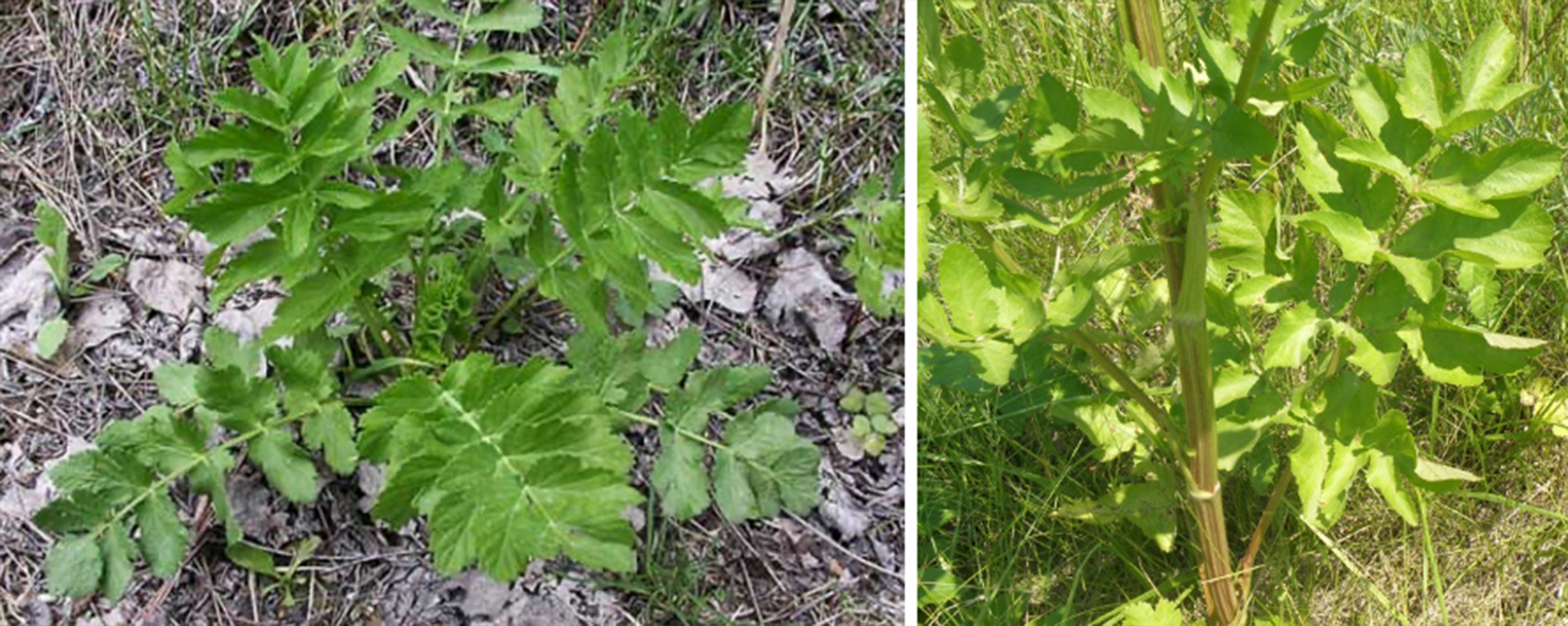Blog
Not-So-Nice Parsley

By Natural Areas Manager Olivia Espinoza for the April 26, 2023 issue of Now in Nature.
Most families have at least one or two members who, well let's just say are a little more volatile than others. (Wait, am I the drama?!) In my family, I do my best to navigate around conversations pertaining to politics, parenting, or anything that could raise blood pressure. I have learned a few key identifiers over the years to avoid tense conversations and do my best to read the room and pay attention to body language. Once I recognize things may be escalating, that’s my cue to walk away!
The Parsley family, also known as the Umbelliferae family, is no different than the rest of us. They have some great family members and they also have troublemakers. More specifically I am referring to two non-native weeds called poison hemlock (Conium maculatum) and wild parsnip (Pastinaca sativa). There are some other troublemakers in the parsley family, but what we are noticing in this region is that poison hemlock and wild parsley seem to be invading much more rapidly than the others.
The name Umbelliferae gives us some clues about identifying members of this family. Umbelliferae means plants having flowers in umbels. Umbels resemble the spokes of an umbrella. They are a key family feature with short flower stalks rising from a common point, like the ribs on an umbrella. The origins of both umbel and umbrella can be traced back to the Latin word umbra which means shadow. When looking at the flowers of plants in this family, you can imagine them as tiny umbrellas.
Poison hemlock produces white flowers on stalks that are more rounded looking while wild parsnip has deep yellow flowers with stalks that have more of a flat-topped appearance. Some other key identifiers for poison hemlock are finely divided, fernlike leaves, a hollow stem, purple spots on a hairless stem, and a musty odor.
For wild parsnip, the identifiers are deeply lobed leaves with up to 15 toothed leaflets, hairless leaves, and hairless grooved stems. Both plants are biennials which means that it takes two years for this plant to complete its life cycle. During its first year, the seeds sprout into a seedling and by fall, the seedling has transformed into a low-growing basal rosette in which it remains throughout winter. During the second year, the plant begins to “bolt”. Wild parsnip can grow to 6’ tall while poison hemlock can reach 8-10’ by summer! Both are prolific seed producers as well.
The “drama” with poison hemlock comes from the fact that it can literally kill you. To induce poisoning, the toxins can either be ingested, enter through the eyes or nasal passages. The roots are more toxic than the leaves and stems, but all parts of this plant should be considered highly dangerous. The toxic compounds from this plant can cause respiratory failure and death. If you have found that you do in fact have this plant on your property or in a location you often frequent, it’s best to not handle the plant when trying to get rid of it. The sap could get on your skin, accidentally rubbed into your eyes, or even ingested when preparing food.
Figure 1 (left below): Poison hemlock in rosette stage
Figure 2 (right below): Purple blotches on stem of poison hemlock

Wild parsnip is a different kind of mischief-maker. Contact with sap from this plant can cause adverse skin reactions to sunlight or phytophotodermatitis (say that three times), which causes burn-like symptoms and skin discoloration. While it will not kill you, it will make you, what I imagine is quite miserable—just google some images, yikes! Another complication is that you often find wild parsnip growing in the same area as poison hemlock. Some folks might mistakenly blame poison hemlock for their misfortune when in fact they had encountered wild parsnip and simply didn't know it.
Figure 1 (left below): Wild parsnip in rosette stage
Figure 2 (right below): The stem and leaves of wild parsnip

At Cincinnati Nature Center, we heavily manage these plants in our natural areas. To avoid becoming sick from either of these plants, we have found that managing them using herbicides is our best option. They are more effective to manage when they are in the rosette stage, right before they start to “bolt”. In some cases, skedaddling is the right choice when you find yourself near patches of these weeds. In others, managing these pesky plants might be in your best interest. The varying degree of concern is why it is so important to be able to distinguish the good from the bad in this family.